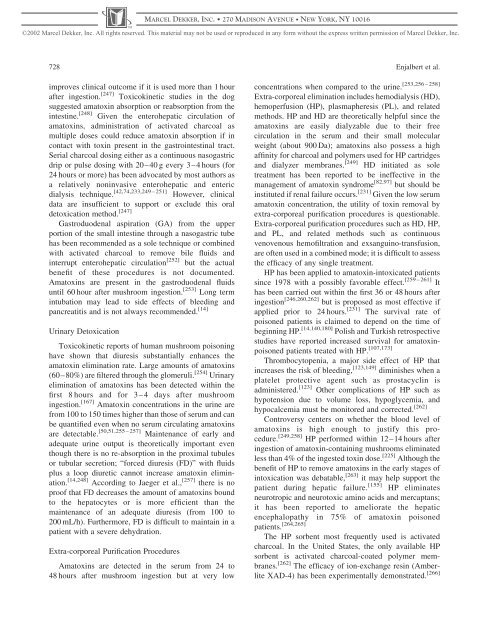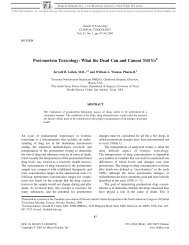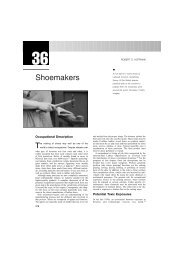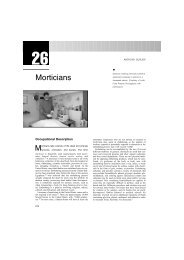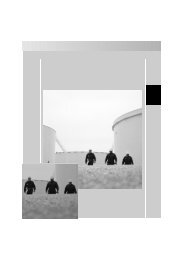9. Treatment of Amatoxin Poisoning-20 year retrospective analysis
9. Treatment of Amatoxin Poisoning-20 year retrospective analysis
9. Treatment of Amatoxin Poisoning-20 year retrospective analysis
You also want an ePaper? Increase the reach of your titles
YUMPU automatically turns print PDFs into web optimized ePapers that Google loves.
728<br />
improves clinical outcome if it is used more than 1 hour<br />
after ingestion. [247] Toxicokinetic studies in the dog<br />
suggested amatoxin absorption or reabsorption from the<br />
intestine. [248] Given the enterohepatic circulation <strong>of</strong><br />
amatoxins, administration <strong>of</strong> activated charcoal as<br />
multiple doses could reduce amatoxin absorption if in<br />
contact with toxin present in the gastrointestinal tract.<br />
Serial charcoal dosing either as a continuous nasogastric<br />
drip or pulse dosing with <strong>20</strong>–40 g every 3–4 hours (for<br />
24 hours or more) has been advocated by most authors as<br />
a relatively noninvasive enterohepatic and enteric<br />
dialysis technique. [42,74,233,249 – 251] However, clinical<br />
data are insufficient to support or exclude this oral<br />
detoxication method. [247]<br />
Gastroduodenal aspiration (GA) from the upper<br />
portion <strong>of</strong> the small intestine through a nasogastric tube<br />
has been recommended as a sole technique or combined<br />
with activated charcoal to remove bile fluids and<br />
interrupt enterohepatic circulation [252] but the actual<br />
benefit <strong>of</strong> these procedures is not documented.<br />
<strong>Amatoxin</strong>s are present in the gastroduodenal fluids<br />
until 60 hour after mushroom ingestion. [253] Long term<br />
intubation may lead to side effects <strong>of</strong> bleeding and<br />
pancreatitis and is not always recommended. [14]<br />
Urinary Detoxication<br />
Toxicokinetic reports <strong>of</strong> human mushroom poisoning<br />
have shown that diuresis substantially enhances the<br />
amatoxin elimination rate. Large amounts <strong>of</strong> amatoxins<br />
(60–80%) are filtered through the glomeruli. [254] Urinary<br />
elimination <strong>of</strong> amatoxins has been detected within the<br />
first 8 hours and for 3–4 days after mushroom<br />
ingestion. [167] <strong>Amatoxin</strong> concentrations in the urine are<br />
from 100 to 150 times higher than those <strong>of</strong> serum and can<br />
be quantified even when no serum circulating amatoxins<br />
are detectable. [50,51,255 – 257] Maintenance <strong>of</strong> early and<br />
adequate urine output is theoretically important even<br />
though there is no re-absorption in the proximal tubules<br />
or tubular secretion; “forced diuresis (FD)” with fluids<br />
plus a loop diuretic cannot increase amatoxin elimination.<br />
[14,248] According to Jaeger et al., [257] there is no<br />
pro<strong>of</strong> that FD decreases the amount <strong>of</strong> amatoxins bound<br />
to the hepatocytes or is more efficient than the<br />
maintenance <strong>of</strong> an adequate diuresis (from 100 to<br />
<strong>20</strong>0 mL/h). Furthermore, FD is difficult to maintain in a<br />
patient with a severe dehydration.<br />
Extra-corporeal Purification Procedures<br />
<strong>Amatoxin</strong>s are detected in the serum from 24 to<br />
48 hours after mushroom ingestion but at very low<br />
MARCEL DEKKER, INC. 270 MADISON AVENUE NEW YORK, NY 10016<br />
©<strong>20</strong>02 Marcel Dekker, Inc. All rights reserved. This material may not be used or reproduced in any form without the express written permission <strong>of</strong> Marcel Dekker, Inc.<br />
Enjalbert et al.<br />
[253,256 – 258]<br />
concentrations when compared to the urine.<br />
Extra-corporeal elimination includes hemodialysis (HD),<br />
hemoperfusion (HP), plasmapheresis (PL), and related<br />
methods. HP and HD are theoretically helpful since the<br />
amatoxins are easily dialyzable due to their free<br />
circulation in the serum and their small molecular<br />
weight (about 900 Da); amatoxins also possess a high<br />
affinity for charcoal and polymers used for HP cartridges<br />
and dialyzer membranes. [249] HD initiated as sole<br />
treatment has been reported to be ineffective in the<br />
management <strong>of</strong> amatoxin syndrome [82,97] but should be<br />
instituted if renal failure occurs. [231] Given the low serum<br />
amatoxin concentration, the utility <strong>of</strong> toxin removal by<br />
extra-corporeal purification procedures is questionable.<br />
Extra-corporeal purification procedures such as HD, HP,<br />
and PL, and related methods such as continuous<br />
venovenous hem<strong>of</strong>iltration and exsanguino-transfusion,<br />
are <strong>of</strong>ten used in a combined mode; it is difficult to assess<br />
the efficacy <strong>of</strong> any single treatment.<br />
HP has been applied to amatoxin-intoxicated patients<br />
since 1978 with a possibly favorable effect. [259 – 261] It<br />
has been carried out within the first 36 or 48 hours after<br />
ingestion [246,260,262] but is proposed as most effective if<br />
applied prior to 24 hours. [231] The survival rate <strong>of</strong><br />
poisoned patients is claimed to depend on the time <strong>of</strong><br />
beginning HP. [14,140,180] Polish and Turkish <strong>retrospective</strong><br />
studies have reported increased survival for amatoxinpoisoned<br />
patients treated with HP. [107,173]<br />
Thrombocytopenia, a major side effect <strong>of</strong> HP that<br />
increases the risk <strong>of</strong> bleeding, [123,149] diminishes when a<br />
platelet protective agent such as prostacyclin is<br />
administered. [123] Other complications <strong>of</strong> HP such as<br />
hypotension due to volume loss, hypoglycemia, and<br />
hypocalcemia must be monitored and corrected. [262]<br />
Controversy centers on whether the blood level <strong>of</strong><br />
amatoxins is high enough to justify this procedure.<br />
[249,258] HP performed within 12–14 hours after<br />
ingestion <strong>of</strong> amatoxin-containing mushrooms eliminated<br />
less than 4% <strong>of</strong> the ingested toxin dose. [225] Although the<br />
benefit <strong>of</strong> HP to remove amatoxins in the early stages <strong>of</strong><br />
intoxication was debatable, [263] it may help support the<br />
patient during hepatic failure. [155] HP eliminates<br />
neurotropic and neurotoxic amino acids and mercaptans;<br />
it has been reported to ameliorate the hepatic<br />
encephalopathy in 75% <strong>of</strong> amatoxin poisoned<br />
patients. [264,265]<br />
The HP sorbent most frequently used is activated<br />
charcoal. In the United States, the only available HP<br />
sorbent is activated charcoal-coated polymer membranes.<br />
[262] The efficacy <strong>of</strong> ion-exchange resin (Amberlite<br />
XAD-4) has been experimentally demonstrated. [266]


